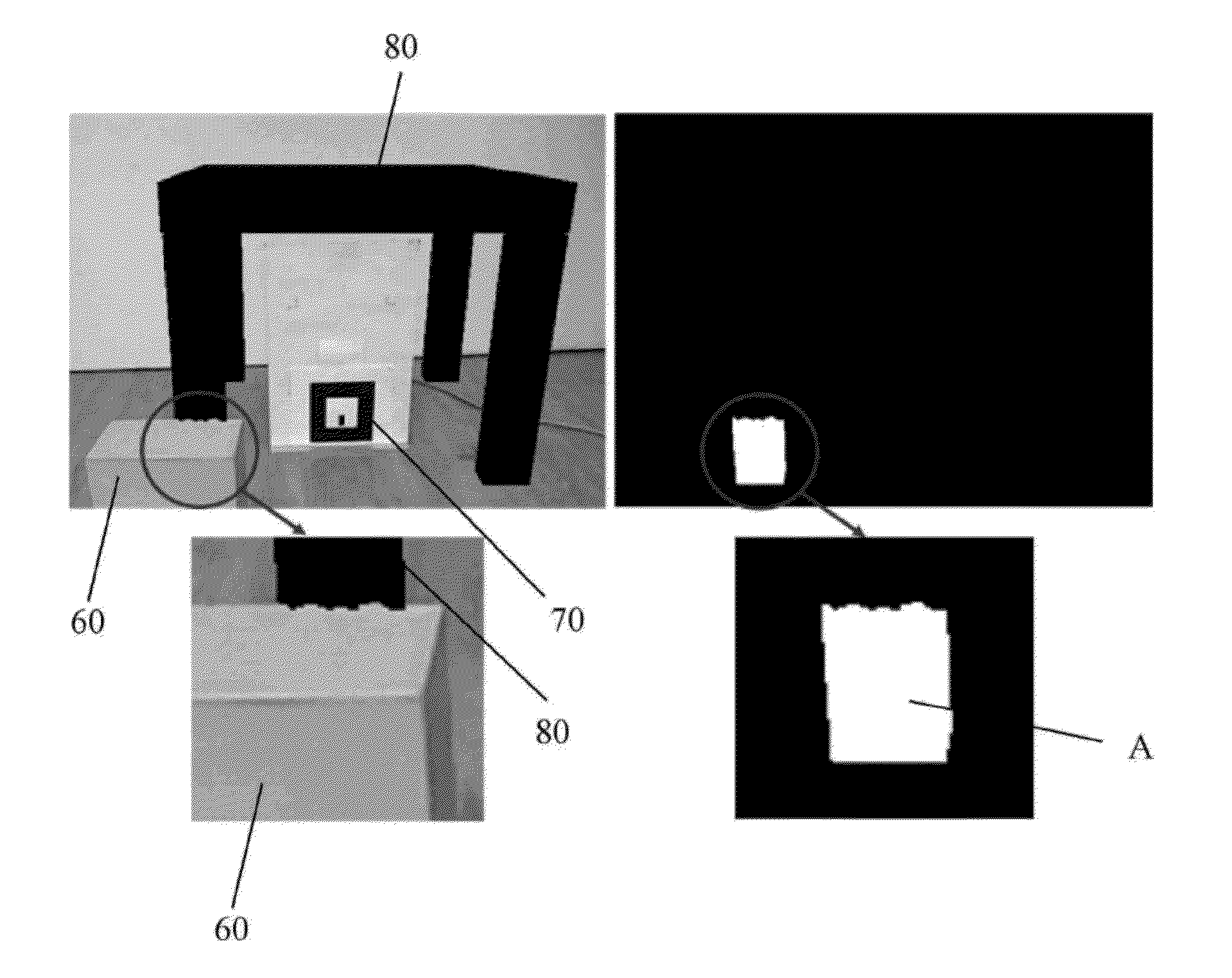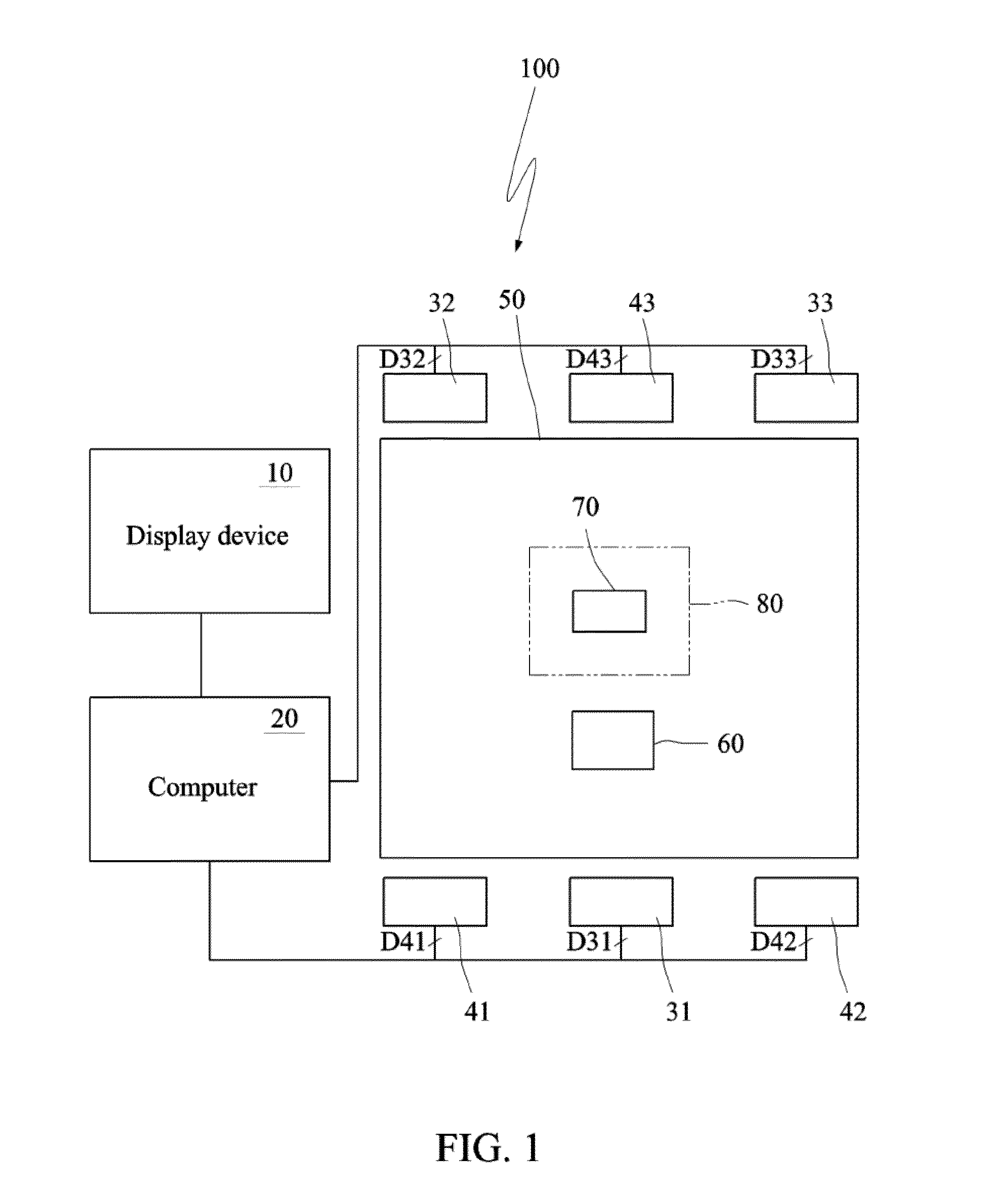Method for Optimizing Occlusion in Augmented Reality Based On Depth Camera
a technology of depth camera and optimization method, applied in the field of optimizing occlusion, can solve the problems of inconsistency or information loss of depth data, error generation of laser speckles, and problem likely to occur around the object edges, so as to improve the visualization result and optimize the occlusion processing
- Summary
- Abstract
- Description
- Claims
- Application Information
AI Technical Summary
Benefits of technology
Problems solved by technology
Method used
Image
Examples
Embodiment Construction
[0020]The present invention will be apparent from the following detailed description, which proceeds with reference to the accompanying drawings, wherein the same references relate to the same elements.
[0021]FIG. 1 is a schematic view showing a system using a method for optimizing occlusion according to a preferred embodiment of the invention. FIG. 2 is a flow chart showing the method for optimizing occlusion according to the preferred embodiment of the invention. Referring to FIGS. 1 and 2, the method for optimizing occlusion in augmented reality based on depth cameras according to the embodiment of the invention is applied to an augmented reality system 100. The augmented reality system 100 comprises one or multiple depth cameras (three depth cameras 41, 42 and 43 are depicted), and one or multiple color cameras (three color cameras 31, 32 and 33 are depicted). In addition, the augmented reality system 100 may further comprise a computer 20 and a display device 10. The computer 20...
PUM
 Login to View More
Login to View More Abstract
Description
Claims
Application Information
 Login to View More
Login to View More - R&D
- Intellectual Property
- Life Sciences
- Materials
- Tech Scout
- Unparalleled Data Quality
- Higher Quality Content
- 60% Fewer Hallucinations
Browse by: Latest US Patents, China's latest patents, Technical Efficacy Thesaurus, Application Domain, Technology Topic, Popular Technical Reports.
© 2025 PatSnap. All rights reserved.Legal|Privacy policy|Modern Slavery Act Transparency Statement|Sitemap|About US| Contact US: help@patsnap.com



